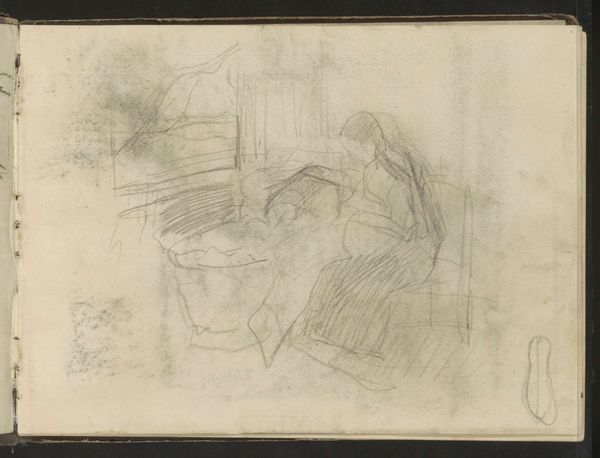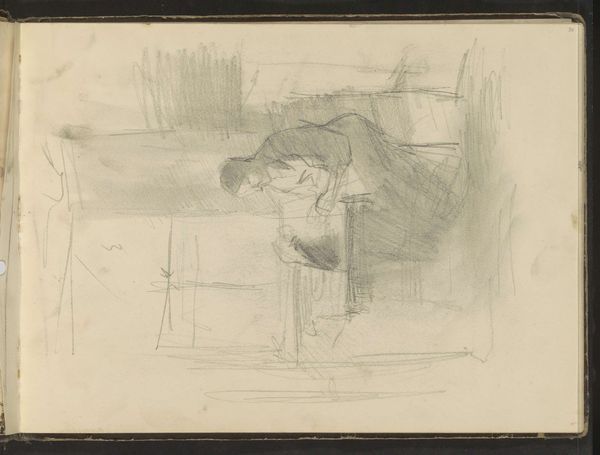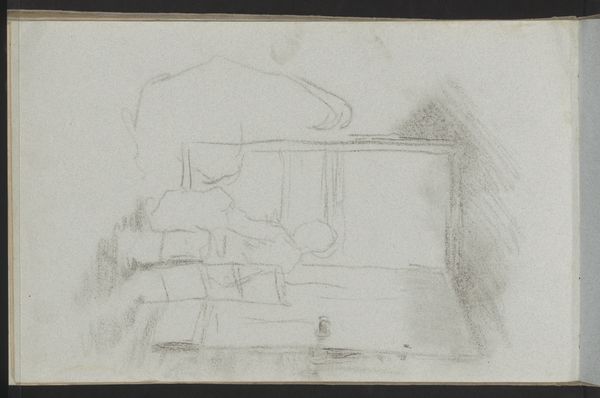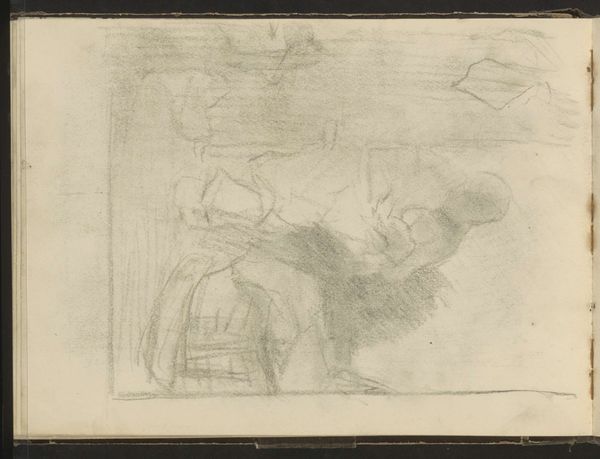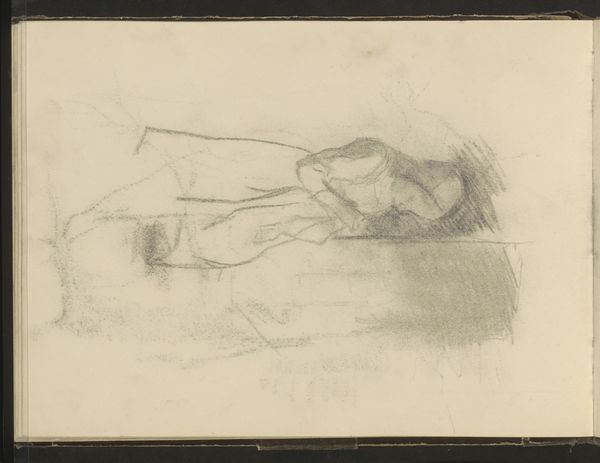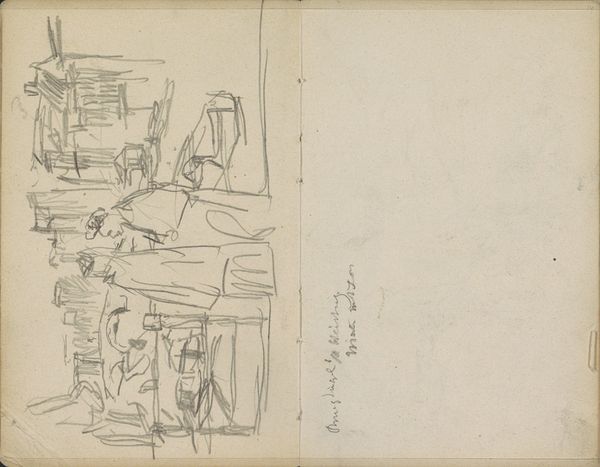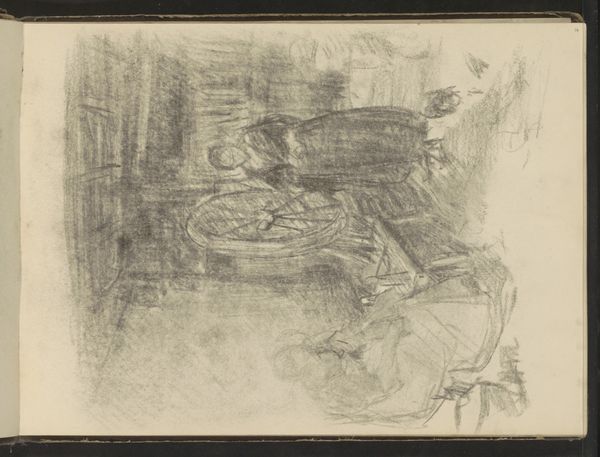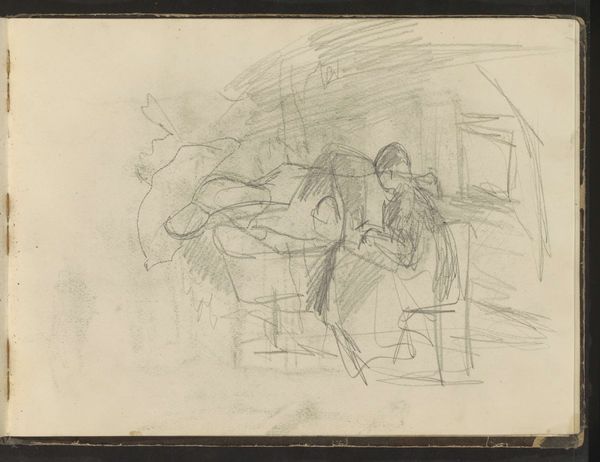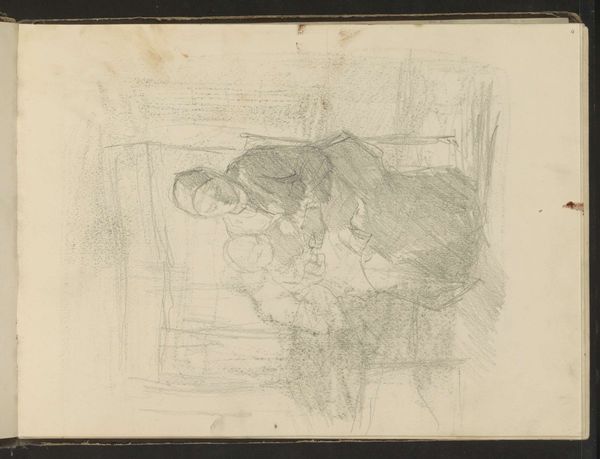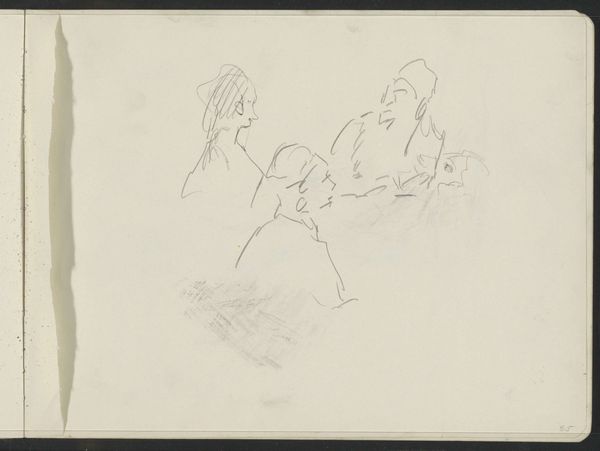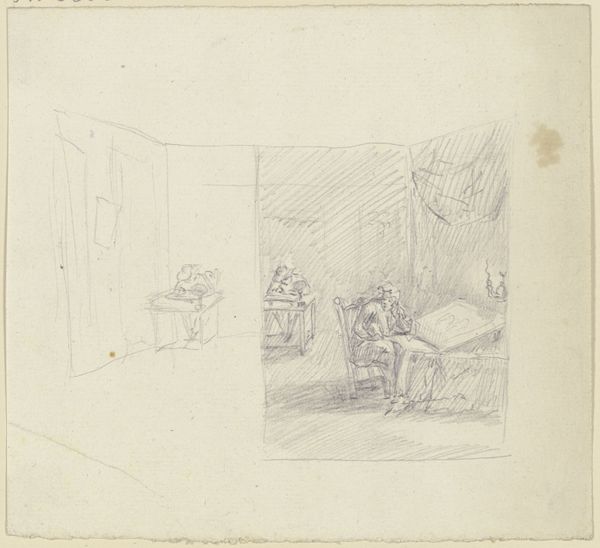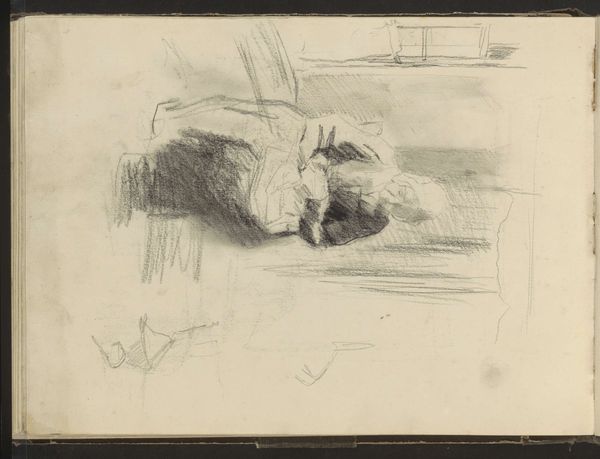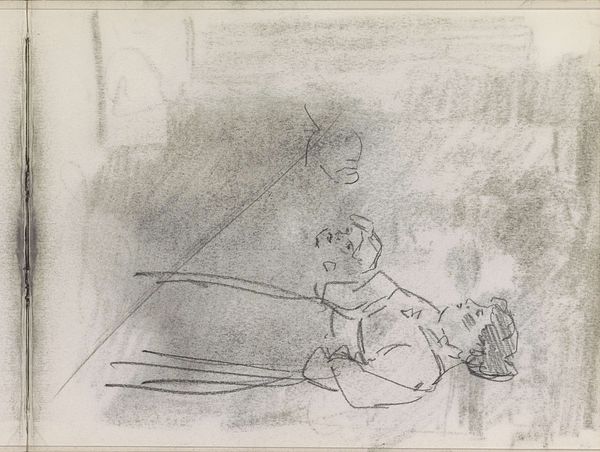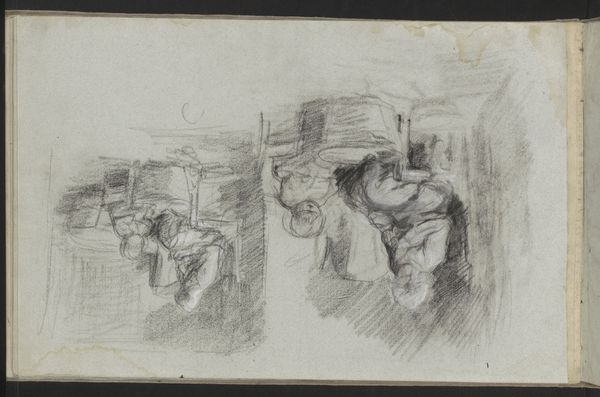
drawing, paper, pencil
#
drawing
#
impressionism
#
pencil sketch
#
sketch book
#
paper
#
pencil
#
genre-painting
#
realism
Copyright: Rijks Museum: Open Domain
Curator: Here we have "Two Figures in an Interior," a pencil drawing on paper by Albert Neuhuys, dating from approximately 1854 to 1914. Editor: My first impression is one of intimacy, yet also distance. The loose sketching style lends it a casual, almost fleeting feel, yet the grey and dark strokes convey a feeling of oppression. Curator: Indeed, that sense of intimacy comes from the depiction of a domestic scene, but the obscured faces create a sort of emotional distance. Interior scenes such as these during the late 19th century often symbolized the values and morals of the era; here, it suggests something melancholic. Editor: I’m drawn to the composition, particularly the way the artist uses line weight to create depth. The contrast between the softly rendered foreground figure and the more defined background suggests different planes of existence within the same space. Do you think the image in the background is also reflected or simply sketched from Neuhuys’ memory of reality? Curator: Good observation! The placement and vagueness of the background scene invites multiple readings, whether a reflected or sketched rendering of time and space, memory plays an intrinsic part to domestic life as genre art continued to be represented through both realistic and impressionistic stylistic interpretation of its symbols. Editor: It's also interesting how the sketch appears as if from a larger sketchbook, bringing us closer to the moment of artistic creation. Almost as if we are inside the head of the artist himself. Curator: Precisely! It acts as a window into a very specific historical and social context while exploring universal themes of human relationships. It evokes these dual states—connection and isolation—simultaneously. Editor: Yes, examining it through a purely formalist lens reveals Neuhuys' mastery over seemingly simple means to communicate complex emotional ideas through semiotic impressions. Curator: Ultimately, it highlights how symbols in art aren't static; they resonate and shift in meaning as they’re carried from one era to the next in art history.
Comments
No comments
Be the first to comment and join the conversation on the ultimate creative platform.
